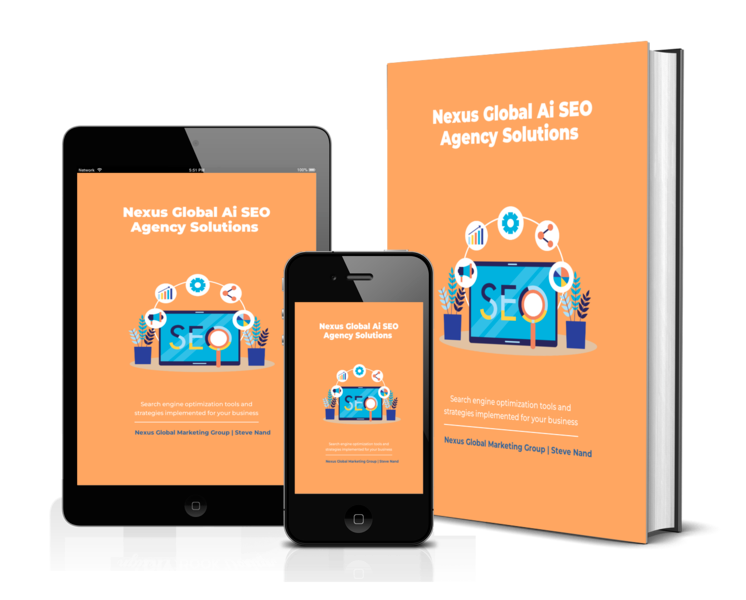Empowering SMEs: Tapping into Data Analytics Tools for Business Growth
In today’s digital age, harnessing the power of data is no longer a luxury reserved for large corporations; it is a critical component for small and medium-sized enterprises (SMEs) aiming to achieve sustainable business growth. Data-driven decisions, powered by big data, analytics, and AI innovation, are revolutionizing how businesses approach product development and market strategies. As an entrepreneur or business owner, tapping into data analytics tools can provide you with the insights needed to innovate your operations, enhance customer experiences, and streamline processes. This piece will guide you through the transformative potential of data analytics tools, offering practical tips to empower SME innovation and set your business on a path to success.
Understanding Data-Driven Decisions
Importance of Data in Business Growth
Data plays a pivotal role in driving business growth. By utilizing data analytics tools, SMEs can gain valuable insights into customer behavior, preferences, and market trends. This empowers them to make informed, data-driven decisions that enhance product development and market strategies. For instance, understanding customer buying patterns can lead to the creation of tailored marketing campaigns, which improves customer engagement and satisfaction.
Moreover, leveraging big data and AI innovation allows businesses to anticipate market shifts and adapt swiftly. This proactive approach positions SMEs to capitalize on new opportunities, ultimately fueling business growth. As a business owner, embracing data analytics not only streamlines operations but also opens avenues for SME innovation. In conclusion, integrating data into your decision-making processes is not just advantageous—it’s essential for staying competitive in today’s dynamic market landscape.
How SMEs Can Leverage Big Data
SMEs can harness big data to gain a competitive edge by implementing strategic data analytics tools. Start by identifying the specific data that can drive your business objectives, such as customer demographics, sales patterns, and feedback. Use data analytics tools to process and analyze this information, transforming raw data into actionable insights.
For example, predictive analytics can help you anticipate customer needs and optimize inventory management, reducing waste and maximizing profit. Additionally, big data allows for personalized marketing strategies, enhancing customer engagement by delivering tailored content that resonates with individual preferences.
Moreover, integrating AI innovation with big data analysis can streamline operations and automate routine tasks, freeing up resources for more strategic activities. This approach not only enhances efficiency but also fosters SME innovation, setting the stage for sustainable business growth. By leveraging big data effectively, SMEs can make informed decisions that propel them towards their growth objectives.
Key Elements of Data-Driven Strategies
To craft successful data-driven strategies, SMEs must focus on several key elements. Firstly, data collection is fundamental. Gather data from diverse sources, such as customer interactions, market trends, and internal operations. This comprehensive data pool provides the foundation for insightful analysis.
Next, invest in robust data analytics tools that can process and interpret this data efficiently. These tools should offer capabilities for both descriptive and predictive analytics, allowing you to understand past trends and foresee future opportunities.
Additionally, ensure data accuracy and integrity. Reliable data is crucial for making sound decisions. Implement data governance practices to maintain high data quality throughout its lifecycle.
Furthermore, cultivate a data-centric culture within your organization. Encourage employees to use data insights in their daily operations and decision-making processes. This mindset fosters SME innovation, driving continuous improvement and growth.
By focusing on these elements, SMEs can develop data-driven strategies that enhance product development and market positioning.

Exploring Data Analytics Tools
Essential Tools for SMEs
For SMEs to effectively capitalize on data analytics, selecting the right tools is crucial. Begin with user-friendly platforms that offer a range of features tailored to small businesses. Tools like Google Analytics provide insights into website traffic and customer behavior, essential for refining marketing strategies.
For more advanced needs, consider platforms like Tableau or Power BI, which offer dynamic data visualization capabilities. These tools help transform complex data sets into intuitive dashboards, enabling you to spot trends and patterns at a glance.
Furthermore, CRM systems such as Salesforce or HubSpot can integrate with analytics tools to provide a holistic view of customer interactions. This integration supports personalized marketing efforts and improved customer service.
Lastly, explore AI-driven tools that offer predictive analytics to anticipate market changes and customer preferences, fostering SME innovation. By leveraging these essential tools, SMEs can drive data-driven decisions, enhancing operational efficiency and business growth.

Choosing the Right Analytics Platform
Selecting the right analytics platform is crucial for SMEs aiming to harness data effectively. Start by defining your business objectives and identify the specific insights you need to achieve them. This clarity will guide you in choosing a platform that aligns with your goals.
Consider the scalability of the platform. As your business grows, your data needs will expand. Opt for solutions that can grow with you, offering advanced features as your requirements become more complex.
Ease of use is another critical factor. A user-friendly interface ensures that your team can navigate the platform efficiently, making data-driven decisions without a steep learning curve. Platforms that provide training resources or customer support can help ease the transition.
Finally, evaluate the platform’s integration capabilities with your existing systems, such as CRM or ERP software. Seamless integration ensures a comprehensive view of your operations, enhancing SME innovation and facilitating business growth. By carefully choosing the right platform, SMEs can unlock the full potential of their data.
Integrating Tools into Daily Operations
Integrating data analytics tools into daily operations is essential for maximizing their benefits. Start by identifying key areas where analytics can drive efficiency and enhance decision-making, such as marketing, sales, and supply chain management.
Train your team to use these tools effectively. This may involve workshops or online courses, ensuring that everyone understands how to interpret data insights and apply them to their respective roles. By fostering a data-driven culture, your team can make more informed decisions that support SME innovation.
Implement automated reporting features to streamline data analysis. This enables your team to receive real-time insights without manual intervention, allowing for prompt action based on data-driven decisions.
Regularly review and adjust your processes to align with insights gained from the analytics. This continuous improvement approach ensures that your operations remain efficient and adaptable to market changes.
By integrating analytics tools into everyday workflows, SMEs can enhance productivity, optimize strategies, and ultimately drive business growth.
Driving Innovation with AI
AI Innovations in Product Development
AI innovations are reshaping product development, offering SMEs new avenues for creativity and efficiency. By leveraging AI, businesses can analyze vast amounts of data to uncover customer preferences and emerging trends. This insight allows SMEs to tailor products that meet market demands more precisely.
AI-driven tools enable rapid prototyping and testing, significantly reducing time-to-market. Machine learning algorithms can predict how changes in design will affect performance, allowing for quick iterations and refinement. This accelerates the product development cycle and enhances the final product’s quality.
Additionally, AI can optimize supply chain management by predicting demand fluctuations and identifying potential disruptions. This foresight helps maintain product availability and minimizes waste, contributing to cost savings and improved customer satisfaction.
Incorporating AI into product development not only streamlines processes but also fosters SME innovation. By embracing these technologies, businesses can stay ahead in competitive markets, delivering products that resonate with consumers and drive business growth.
Utilizing AI for Market Strategies
AI is revolutionizing market strategies by providing businesses with deeper insights into consumer behavior and preferences. SMEs can use AI-driven analytics to segment their audience more effectively, tailoring marketing campaigns to specific demographics and increasing engagement rates. This targeted approach ensures resources are allocated efficiently, maximizing return on investment.
Predictive analytics, powered by AI, allows businesses to anticipate market trends and consumer needs. By analyzing historical data and current market conditions, AI can forecast future demand, enabling SMEs to adjust their strategies proactively. This foresight helps maintain competitiveness and adapt to changing market landscapes.
Moreover, AI can enhance customer interactions through personalized experiences. Chatbots and virtual assistants, for instance, provide real-time support, improving customer satisfaction and loyalty.
By integrating AI into market strategies, SMEs can achieve a more nuanced understanding of their audience, optimize marketing efforts, and drive sustainable business growth. Embracing AI in this context empowers businesses to stay ahead in a rapidly evolving market.
Overcoming Challenges in AI Adoption
Adopting AI technologies presents several challenges for SMEs, but these can be overcome with strategic planning and implementation. One primary obstacle is the initial investment in AI infrastructure, which can be mitigated by opting for cloud-based solutions that offer scalability and reduce upfront costs.
Skill gaps within the workforce also pose a significant challenge. SMEs can address this by investing in training programs that upskill employees in AI technologies, ensuring they can effectively utilize these tools to drive business growth.
Data privacy and security concerns are prevalent in AI adoption. Implementing robust data governance frameworks and adhering to industry best practices can help safeguard sensitive information and build trust with customers.
Finally, integrating AI into existing systems can be complex. SMEs should start with pilot projects to test AI capabilities and gradually expand their use as they gain confidence and expertise.
By addressing these challenges, SMEs can successfully integrate AI into their operations, fostering innovation and enhancing competitiveness.
Implementing Effective Market Strategies
Data-Driven Market Analysis
Data-driven market analysis is a cornerstone of effective market strategy implementation for SMEs. By leveraging data analytics tools, businesses can obtain a comprehensive view of market dynamics, consumer preferences, and competitive landscapes. This information is pivotal in crafting strategies that are both responsive and proactive.
Start by collecting data from various touchpoints, including customer interactions, social media, and sales reports. Analyzing this data helps identify trends and patterns, allowing your business to align its offerings with market demand. For instance, spotting a rising trend in customer preferences can guide product development and marketing efforts.
Utilize predictive analytics to forecast future market behaviors, enabling your SME to anticipate shifts and adjust strategies accordingly. This foresight not only minimizes risks but also positions your business to seize emerging opportunities.
Incorporating data-driven market analysis into your strategic planning enhances decision-making, optimizes resource allocation, and ultimately drives business growth. This approach ensures that your market strategies are grounded in real-world insights and poised for success.
Tailoring Strategies for Business Growth
To achieve business growth, it’s crucial for SMEs to tailor their market strategies to align with their unique objectives and market position. Begin by clearly defining your business goals, whether it’s expanding market share, launching new products, or increasing customer retention. This clarity will guide your strategy formulation process.
Next, segment your target audience based on data insights. Understand their specific needs and preferences, allowing for the creation of personalized marketing campaigns that resonate with different customer segments. This targeted approach enhances customer engagement and drives sales growth.
Evaluate your competitive landscape to identify gaps and opportunities. By understanding your competitors’ strengths and weaknesses, you can differentiate your offerings and position your business more effectively in the market.
Continuously monitor and adjust your strategies based on performance metrics and market feedback. This agile approach ensures your strategies remain relevant and effective, supporting sustained business growth.
By tailoring strategies meticulously, SMEs can navigate market complexities and achieve their growth ambitions.
Case Studies of Successful SMEs
Examining case studies of successful SMEs provides valuable insights into effective market strategies. One notable example is an SME in the retail sector that leveraged data analytics to pinpoint emerging fashion trends. By tailoring their inventory and marketing efforts accordingly, they increased sales by 30% in one quarter.
Another case involves a tech startup utilizing AI-driven tools to enhance customer support. By implementing chatbots, they improved response times and customer satisfaction, leading to a 20% boost in client retention rates. This innovation allowed them to scale operations without proportionately increasing costs.
A third example highlights a food delivery service that used predictive analytics to optimize delivery routes and times. This efficiency reduced operational costs by 15% and improved delivery times, enhancing customer satisfaction and loyalty.
These case studies demonstrate the power of data-driven decisions and tailored strategies in driving SME growth. By learning from these examples, other SMEs can adapt similar approaches to achieve their business objectives and thrive in competitive markets.
Building a Culture of SME Innovation
Encouraging Data Literacy in Teams
Promoting data literacy within teams is essential for fostering a culture of innovation in SMEs. Begin by providing targeted training to enhance employees’ understanding of data analytics tools and methodologies. This empowers them to interpret data insights effectively and apply them to their decision-making processes.
Encourage a collaborative environment where team members can share data-driven insights and brainstorm innovative solutions. By promoting open communication, you foster a culture of continuous learning and improvement, driving SME innovation.
Integrate data literacy into your organizational goals, making it a key performance indicator for staff. Recognize and reward employees who excel in utilizing data insights to achieve business objectives. This acknowledgment reinforces the importance of data-driven decisions and motivates others to enhance their skills.
Leverage accessible data visualization tools that simplify complex information, making it easier for all team members to understand and utilize data effectively. By embedding data literacy into your company culture, you not only enhance operational efficiency but also position your SME for sustained growth and competitiveness.
Fostering an Innovative Mindset
Cultivating an innovative mindset within an SME is crucial for long-term success and competitiveness. Start by encouraging curiosity and experimentation among your team. Allow space for creative thinking and risk-taking, understanding that not all ideas will succeed, but each one provides valuable learning opportunities.
Promote a culture where questioning the status quo is welcomed. Encourage employees to challenge existing processes and seek out more efficient methods. This openness to change fosters an environment where innovation thrives.
Provide access to resources and tools that stimulate creativity, such as brainstorming sessions, workshops, and collaborative platforms. These opportunities facilitate the exchange of ideas across different departments and perspectives, leading to comprehensive solutions and breakthrough innovations.
Leadership plays a pivotal role in setting the tone for innovation. Lead by example and demonstrate a commitment to continuous improvement and adaptability. Recognize and celebrate innovative efforts and successes, reinforcing their value to the organization.
By fostering an innovative mindset, SMEs can drive creativity, enhance problem-solving capabilities, and achieve sustainable growth.
Long-term Benefits of Data Analytics
Data analytics offers significant long-term benefits for SMEs, driving both operational efficiency and strategic growth. By continuously leveraging data insights, businesses can refine processes, reduce waste, and optimize resource allocation. This ongoing enhancement results in cost savings and improved profit margins over time.
Moreover, data analytics enables SMEs to remain agile in a competitive market. By predicting trends and customer preferences, businesses can proactively adjust strategies, ensuring they meet changing demands. This foresight minimizes risks associated with market fluctuations and supports sustained growth.
Data-driven decisions also enhance customer relationships. By understanding customer behavior and preferences, SMEs can deliver personalized experiences, boosting satisfaction and loyalty. This customer-centric approach fosters long-term relationships and repeat business.
Furthermore, data analytics supports innovation by uncovering new opportunities and insights. This capability allows SMEs to explore new markets, develop innovative products, and maintain a competitive edge.
Ultimately, embedding data analytics into an SME’s culture ensures resilience, adaptability, and success in an ever-evolving business landscape.


















